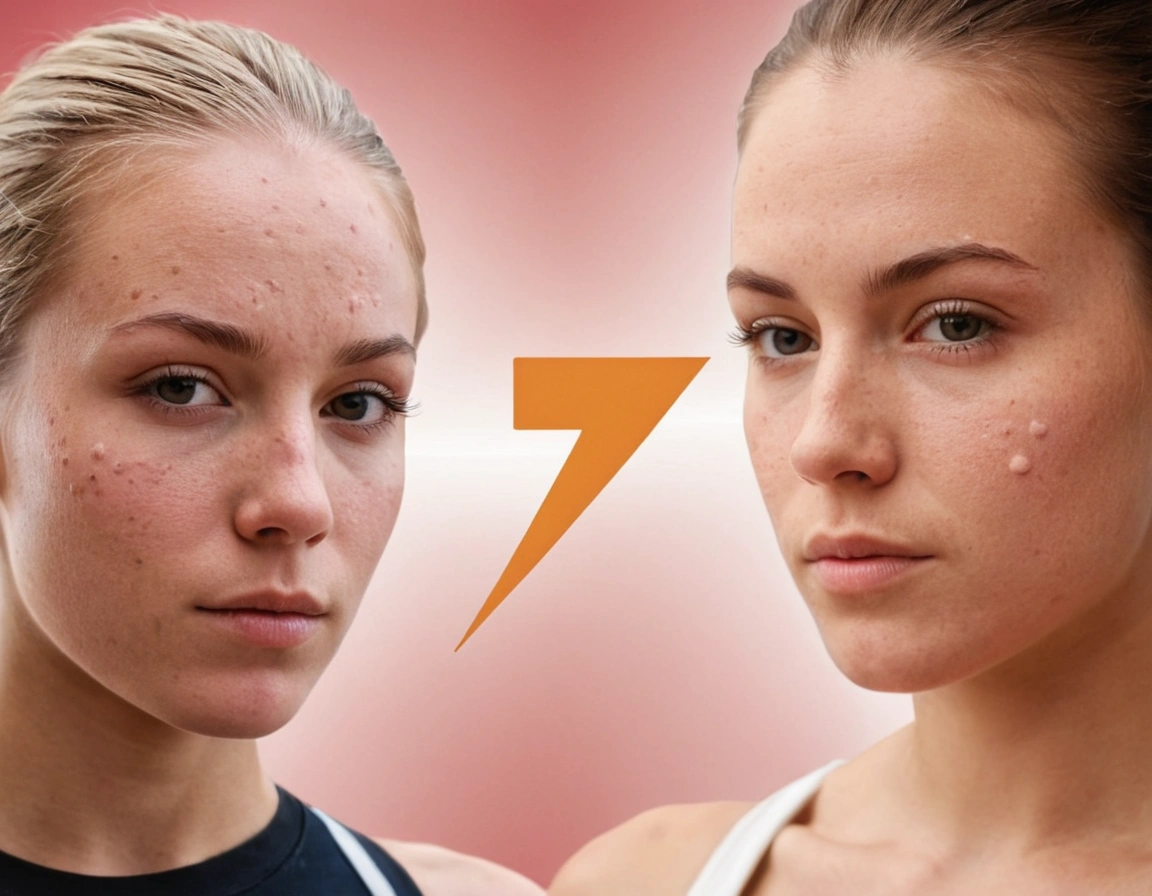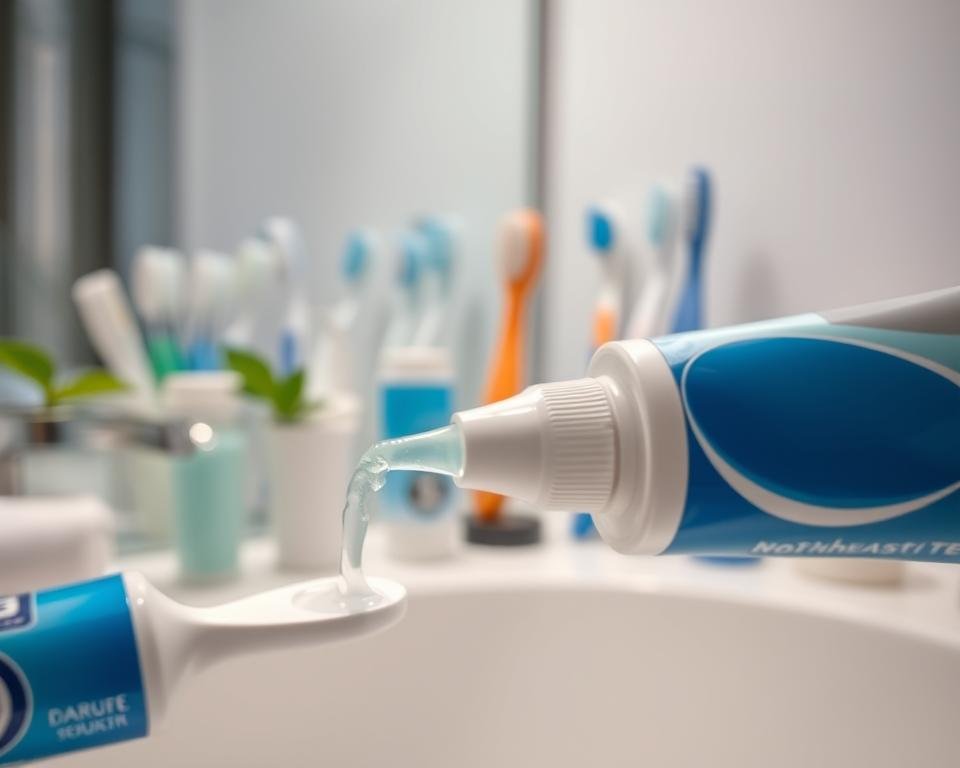You’re dedicated. You hit the gym consistently, you track your progress, and you use a pre-workout supplement to maximize every single session. But lately, you’ve noticed something else popping up along with your new personal records: stubborn, painful acne. If you’ve started to wonder if your pre-workout is causing breakouts, you’re not just imagining things.
You’re doing everything right for your body, yet your skin seems to be rebelling. It’s a frustrating and common problem that leaves many fitness enthusiasts searching for answers. Is it the caffeine? The creatine? The cocktail of ingredients with names you can barely pronounce?
Here at go4healthnfitness.com, we believe in providing answers grounded in scientific truth. We’re here to cut through the noise and investigate the real, evidence-based reasons your pre-workout supplement might be the secret culprit behind your acne. Get ready for a deep dive into the science of what’s in your shaker bottle and how it impacts your skin.
- SAY BYE-BYE TO ACNE BREAKOUTS: Fast-clearing solution for stubborn acne spots. Maximum strength 10% Azelaic Acid penetra…
- VARIOUS BENEFITS FOR ACNE-PRONE SKIN: This hormonal acne treatment cream effectively tackles cystic, hormonal, and sever…
- NATURAL AND GENTLE FORMULA: Contains salicylic acid, tea tree oil, niacinamide and natural active ingredients. Unclogs p…
- [ACNE FACE WASH WITH SALICYLIC ACID] Salicylic acid is a beta hydroxy acid (BHA) that helps gently exfoliate and remove …
- [FOAMING FACIAL CLEANSER] This CeraVe face wash dispenses as a clear gel and transforms into a light, foaming face wash …
- [ACNE WASH WITH OIL ABSORBING TECHNOLOGY] CeraVe Acne Control Cleanser helps prevent new breakouts from forming with pur…
🔑 Key Takeaways
Don’t have time for the full deep dive? Here are the essential points you need to know:
- The Main Culprits: High doses of caffeine, artificial sweeteners (like sucralose and aspartame), certain B vitamins (especially B12), and high-glycemic carbohydrates (like maltodextrin) are the most likely ingredients in pre-workouts to trigger acne.
- Hormonal Disruption: These ingredients can spike hormones like insulin and IGF-1 (Insulin-like Growth Factor 1), which in turn increase sebum (oil) production and skin cell growth, creating the perfect environment for breakouts.
- Creatine is Likely Innocent: Despite common belief, there is currently no direct scientific evidence linking creatine monohydrate to acne. The confusion often arises because creatine is taken with other triggering ingredients.
- It’s Not Just the Supplement: Increased sweating, dehydration, and hormonal shifts from intense exercise itself can also contribute to acne. Your pre-workout can simply amplify these effects.
- You Have Options: You don’t have to choose between a great workout and clear skin. Choosing a “skin-friendly” pre-workout involves reading labels carefully, avoiding trigger ingredients, and focusing on cleaner formulations.
What’s Really In Your Pre-Workout? A Quick Look at Common Ingredients 🧪
Before we pinpoint the offenders, let’s understand what a pre-workout supplement is designed to do. Its primary goal is to enhance performance, focus, and energy. To achieve this, manufacturers combine various ingredients, each with a specific function.
A typical formula often includes:
- Stimulants: Primarily caffeine, to increase alertness and fight fatigue.
- Performance Enhancers: Ingredients like Beta-Alanine (for endurance) and Creatine (for strength and power).
- Vasodilators: Compounds like L-Citrulline or L-Arginine to increase blood flow (the “pump”).
- Flavoring and Sweeteners: Artificial sweeteners, colors, and flavors to make the powder palatable.
- Vitamins and Minerals: Often B-vitamins are added for their role in energy metabolism.
While this combination can be effective for your workout, it can also be a perfect storm for your skin. The problem isn’t the idea of a pre-workout, but the specific ingredients used in many popular formulas.
The Scientific Link: 4 Ingredients That Could Be Clogging Your Pores
The connection between diet and acne was debated for years, but modern dermatology now recognizes that certain foods and ingredients can indeed trigger or worsen breakouts in susceptible individuals. The mechanism often involves inflammation and hormonal fluctuation.
As Dr. Ava Shamban, a board-certified dermatologist, notes, “What you ingest can absolutely influence your skin’s behavior. Certain ingredients can trigger systemic inflammation or manipulate hormones like insulin, which directly impacts sebaceous gland function and can lead to acne.”
Let’s break down the four most likely troublemakers in your supplement.
1. Caffeine in High Doses
Your morning coffee probably isn’t the issue. The problem is the massive dose of caffeine packed into a single scoop of many pre-workouts, often ranging from 150 mg to over 400 mg.
- Hormonal Stress: High levels of caffeine can increase the production of cortisol, your body’s primary stress hormone. Chronically elevated cortisol is known to trigger the sebaceous glands to produce more oil, a key factor in acne development.
- Androgenic Effects: This cortisol spike can have a downstream androgenic effect, meaning it can mimic male hormones that are notorious for causing cystic acne along the jawline.
If you notice your breakouts are deep, painful, and cystic, the high stimulant content of your supplement could be a major contributor to these supplements causing acne.
2. Artificial Sweeteners
To make pre-workouts taste like “Blue Raspberry Rage” or “Tropic Thunder” without adding calories, companies rely heavily on artificial sweeteners like sucralose, aspartame, and acesulfame potassium.
- Insulin and IGF-1 Spikes: Research from journals like the Journal of the American Academy of Dermatology suggests a strong link between high-glycemic foods/sweeteners and acne. Even though they are non-caloric, some artificial sweeteners can still provoke an insulin response in certain individuals.
- Gut Microbiome Disruption: Emerging science indicates that artificial sweeteners can alter the delicate balance of your gut bacteria. An unhealthy gut microbiome is linked to systemic inflammation, which can manifest on your skin as acne.
So, while you’re avoiding sugar, the artificial sweeteners and pimples connection is a real and scientifically supported concern.
- SAY BYE-BYE TO ACNE BREAKOUTS: Fast-clearing solution for stubborn acne spots. Maximum strength 10% Azelaic Acid penetra…
- VARIOUS BENEFITS FOR ACNE-PRONE SKIN: This hormonal acne treatment cream effectively tackles cystic, hormonal, and sever…
- NATURAL AND GENTLE FORMULA: Contains salicylic acid, tea tree oil, niacinamide and natural active ingredients. Unclogs p…
- Clears Cystic Acne On The Spot: It’s time to tackle cystic acne overnight. This hormonal acne cream brings fast, visible…
- Nature-Powered Ingredients: Say goodbye to stubborn acne with our powerful acne treatment. This lightweight cystic acne …
- A Little Goes A Long Way: With over 120 uses in a single container, this cystic acne overnight treatment is ideal for bo…
- Premium Material extraction tools for estheticians : sterilized and clean, without rust and safe to use and never worrie…
- 9 Function comedone extractor tool with blackhead tweezers: professional zit popper tool for removing pimples, blackhead…
- NINE Functional ends–blackhead remover tweezers with 3 different sharp needle: black head remover for face tool are use…
3. High-Glycemic Carbohydrates (Maltodextrin & Dextrose)
Some pre-workouts, particularly those aimed at “mass gaining,” include simple carbohydrates like maltodextrin or dextrose for a quick energy source. These are extremely high on the glycemic index.
- The Insulinogenic Cascade: Like sugar, these carbs cause a rapid spike in blood sugar and, consequently, insulin. This insulin surge boosts the production of Insulin-like Growth Factor 1 (IGF-1).
- The Role of IGF-1: IGF-1 is a major player in acne. It makes your skin cells reproduce more quickly (leading to clogged pores) and dramatically increases sebum production. This creates a highly comedogenic (pore-clogging) environment.
4. Certain B Vitamins (Specifically B12)
This is perhaps the most surprising culprit. B vitamins are essential for health, but in the large, synthetic doses found in supplements, they can be problematic for the skin. Vitamin B12 is the most-studied offender.
- Altered Skin Bacteria: A 2015 study published in Science Translational Medicine uncovered a fascinating mechanism. It found that high doses of B12 can change the metabolic activity of the skin bacteria Propionibacterium acnes. This change causes the bacteria to produce inflammatory compounds that lead to acne pimples.
- Not a Deficiency Issue: This is an important distinction. The acne isn’t caused by a deficiency of B12, but an oversupply from supplementation, which forces the bacteria on your skin to behave differently.
Hormones on Overdrive: How Pre-Workouts Can Affect Your Body’s Balance
At its core, much of the pre-workout acne problem is hormonal. The combination of intense exercise and certain supplement ingredients can create a cascade effect that disrupts your body’s delicate balance.
- You drink your pre-workout. It contains high caffeine, artificial sweeteners, and maybe B12.
- Cortisol, Insulin, and IGF-1 levels spike. This is your body’s reaction to the high-stimulant, high-sweetener load.
- Sebaceous glands go into overdrive. These hormones signal your oil glands to produce more sebum.
- Skin cell turnover increases. IGF-1 also causes keratinocytes (skin cells) to multiply faster than they can be shed.
- Pores become clogged. The excess oil and dead skin cells create the perfect plug, trapping bacteria.
- Inflammation and breakouts occur. The trapped bacteria, now producing inflammatory byproducts (thanks, B12!), cause the red, swollen pimples we know as acne.
Is Creatine the Culprit? Busting a Common Myth
It’s one of the most common questions we hear: “Is my creatine causing breakouts?” Given its popularity, it’s an easy scapegoat.
However, based on current scientific literature, the answer is likely no. Creatine skin issues are not a recognized side effect in clinical research. Creatine monohydrate is one of the most studied supplements on the planet, and its primary function is to help recycle ATP (your cells’ energy currency). It does not have a direct, known mechanism for influencing the hormonal pathways (insulin, cortisol, IGF-1) that trigger acne.
So, why the bad rap?
- Guilt by Association: Creatine is often sold in pre-workout formulas that also contain the real culprits: caffeine, sweeteners, and B12.
- Dehydration: Creatine pulls water into your muscles. If you don’t significantly increase your water intake, your skin can become dehydrated, which can compromise its barrier function and potentially worsen acne.
The Verdict: Don’t blame the creatine. Look at the other ingredients on the label.
Common Pre-Workout Ingredients & Their Potential Acne Risk
| Ingredient | Scientific Reason for Concern | Acne Risk Level |
|---|---|---|
| High-Dose Caffeine | Increases stress hormone (cortisol), leading to higher oil production. | Moderate to High |
| Artificial Sweeteners | Can spike insulin/IGF-1 in sensitive individuals; disrupts gut health. | Moderate |
| Vitamin B12 | Alters skin bacteria metabolism, causing them to become pro-inflammatory. | Moderate to High |
| High-Glycemic Carbs | Causes a major spike in insulin and IGF-1, leading to excess sebum. | High |
| Creatine Monohydrate | No direct scientific evidence linking it to acne pathways. | Low |
| Beta-Alanine | May cause temporary skin flushing/tingling (paresthesia), but not linked to acne. | Low |
| L-Citrulline/Arginine | Increases blood flow; no direct link to acne formation. | Low |
How to Choose a Skin-Friendly Pre-Workout 💪
But does this mean you have to give up your pre-workout boost? Absolutely not! It means you need to become a more discerning consumer. Here’s how to find a non-comedogenic pre-workout.
- Read the Entire Label: Don’t just look at the marketing claims on the front. Turn the tub around and scrutinize the “Other Ingredients” list. This is where sweeteners and fillers hide.
- Opt for Stimulant-Free (or Lower Stim): If you suspect caffeine is the issue, try a stimulant-free pre-workout. These focus on ingredients like L-Citrulline and Beta-Alanine for pump and endurance without the hormonal stress.
- Look for Natural Sweeteners: Choose products sweetened with Stevia, Monk Fruit, or Erythritol, which have a much lower impact on insulin.
- Avoid Unnecessary B Vitamins: Check the vitamin panel. If you see B12 listed at several thousand percent of your daily value, it might be a red flag for your skin.
- Consider Single-Ingredient Supps: The ultimate way to control what you’re taking is to build your own “stack.” Buy high-quality, pure L-Citrulline, Beta-Alanine, and (if you want it) Creatine. You can mix them yourself, giving you all the benefits with none of the filler.
- Prioritize Hydration: No matter what you take, drink plenty of water before, during, and after your workout to support skin health.
Conclusion: Take Control of Your Skin and Your Workout
The link between pre-workout supplements and acne is not a myth—it’s a scientifically plausible reality for many people. The potent combination of high-dose stimulants, artificial additives, and mega-dosed vitamins can disrupt the hormonal and inflammatory balance of your skin, leading to frustrating breakouts.
However, the solution isn’t to abandon your fitness goals. The solution is knowledge. By understanding the specific ingredients that pose a risk, you can take control. You can scrutinize labels, choose cleaner products, or even build your own formula from pure, effective ingredients.
Your journey to peak fitness should support your entire well-being, and that includes clear, healthy skin. Armed with this evidence-based guidance, you can now make an informed choice that benefits your performance in the gym and your reflection in the mirror.
❓ Frequently Asked Questions (FAQ)
1. Will stopping my pre-workout clear my skin? If your supplement is the primary trigger, you should see an improvement within a few weeks of stopping it or switching to a skin-friendly alternative. However, acne is often multifactorial. Skincare, diet, stress, and genetics all play a role.
2. Are there any ‘acne-safe’ pre-workout alternatives? Yes. A simple cup of black coffee or green tea can provide a gentle energy boost without the added sweeteners and vitamins. For performance, you can buy single ingredients like pure L-Citrulline for pump and mix it with water. This is the safest route for sensitive skin.
3. I take my pre-workout and then sweat a lot. Could the sweat be the real problem? Sweat itself doesn’t cause acne, but it creates a moist environment where acne-causing bacteria can thrive. The combination is the issue: the pre-workout may be internally promoting acne, while the sweat provides the external environment for it to flourish. Always cleanse your skin post-workout to remove sweat, oil, and bacteria.
4. How much caffeine is too much for your skin? This is highly individual. Some people are more sensitive to the cortisol-spiking effects of caffeine than others. If you have acne-prone skin, a good rule of thumb is to stay under 200mg of caffeine from all sources before a workout and see how your skin reacts.
5. What’s the single most important ingredient to avoid for preventing pre-workout breakouts? While it varies, a great starting point is to eliminate artificial sweeteners (like sucralose) and formulas with excessively high doses of Vitamin B12. These are two of the most common and scientifically supported culprits.
References
- Melnik, B. C. (2012). Dietary intervention in acne: Attenuation of increased mTORC1 signaling promoted by Western diet. Dermato-endocrinology, 4(1), 20–32.
- Kang, D., Shi, B., Erfe, M. C., Craft, N., & Li, H. (2015). Vitamin B12 modulates the transcription of the skin microbiome in acne pathogenesis. Science Translational Medicine, 7(293), 293ra103.
- Kucharska, A., Szmurło, A., & Sińska, B. (2016). Significance of diet in treated and untreated acne vulgaris. Postepy dermatologii i alergologii, 33(2), 81–86.
- Smith, R. N., Mann, N. J., Braue, A., Mäkeläinen, H., & Varigos, G. A. (2007). A low-glycemic-load diet improves symptoms in acne vulgaris patients: a randomized controlled trial. The American journal of clinical nutrition, 86(1), 107–115.
- National Institutes of Health. (2021). Dietary Supplements for Exercise and Athletic Performance. Office of Dietary Supplements.
- SAY BYE-BYE TO ACNE BREAKOUTS: Fast-clearing solution for stubborn acne spots. Maximum strength 10% Azelaic Acid penetra…
- VARIOUS BENEFITS FOR ACNE-PRONE SKIN: This hormonal acne treatment cream effectively tackles cystic, hormonal, and sever…
- NATURAL AND GENTLE FORMULA: Contains salicylic acid, tea tree oil, niacinamide and natural active ingredients. Unclogs p…
- Clears Cystic Acne On The Spot: It’s time to tackle cystic acne overnight. This hormonal acne cream brings fast, visible…
- Nature-Powered Ingredients: Say goodbye to stubborn acne with our powerful acne treatment. This lightweight cystic acne …
- A Little Goes A Long Way: With over 120 uses in a single container, this cystic acne overnight treatment is ideal for bo…
- Premium Material extraction tools for estheticians : sterilized and clean, without rust and safe to use and never worrie…
- 9 Function comedone extractor tool with blackhead tweezers: professional zit popper tool for removing pimples, blackhead…
- NINE Functional ends–blackhead remover tweezers with 3 different sharp needle: black head remover for face tool are use…








